The name Allerton comes from Robert Allerton, Mayflower descendant and heir to a Chicago livestock/banking/real estate fortune who bought the land in 1938. I did not pay much attention to the docent (I never pay much attention to docents, do you? I'm usually taking pictures instead...for you), so I didn't hear what he said about Allerton. Fortunately, there is a website. Using my sharp sense of discernment and acute reading comprehension skills, I gather that Allerton lead an alternative lifestyle (if you know what I mean and I think you do):
In 1938 McBryde sold the property to Robert Allerton. Allerton was the only son of a Mayflower descendant who had made his fortune in Chicago in livestock, banking, and real estate. After spending five years studying art in Europe, Allerton concluded that he would never be successful as an artist and he returned to Chicago. He became an avid art collector and patron. He also became fascinated by landscape architecture and set about planning a series of formal gardens and settings for statues at "The Farms" in Monticello, Illinois.Shall we just get on with it already? If you visit Kauai on a budget and don't want to pay the $35-45 admission to see the Allerton, you may still visit the gardens around the visitor center. Parking is free. I blogged about these gardens waaay back in 2007 when we visited the adjacent McBryde Garden. Note that I misspelled McBryde back in 2007. Haha! Amateurish!
Allerton met John Gregg, a young architectural student at the University of Illinois, who he eventually adopted. The two men traveled the world on collecting trips, purchasing works of art and getting new inspiration for the gardens. On their way home to Illinois from a collecting trip in the Pacific in 1937, the Allertons visited Kaua'i and were captivated with the lower portion of the Lāwa‘i Valley. They purchased the property. In 1938 they moved into their new home, which was designed by John Gregg. They called the property “Lāwa'i-kai” (kai is the Hawaiian word for "near the sea.")
Robert Allerton and John Gregg immediately began designing and laying out the gardens, continuing to include exotic plants as Alexander McBryde had done. They enlarged the gardens with plants they collected in Southeast Asia and the Pacific and they introduced classic statuary that they collected as well.
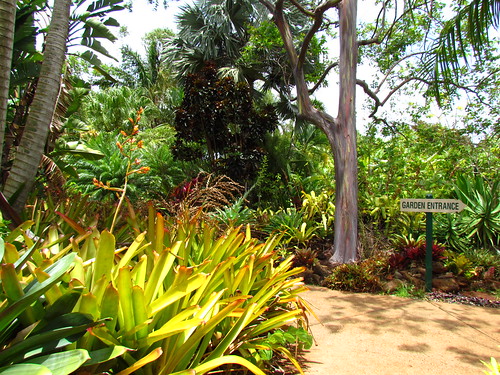
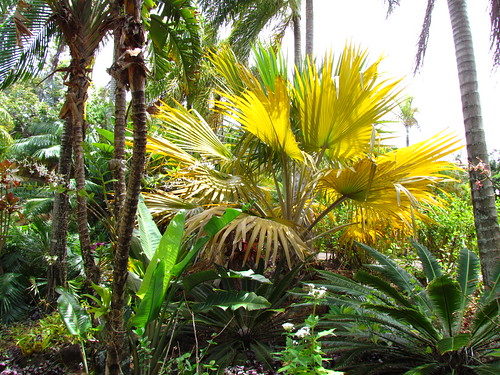

I did not catch this guy's name. What a beauty tho', huh?
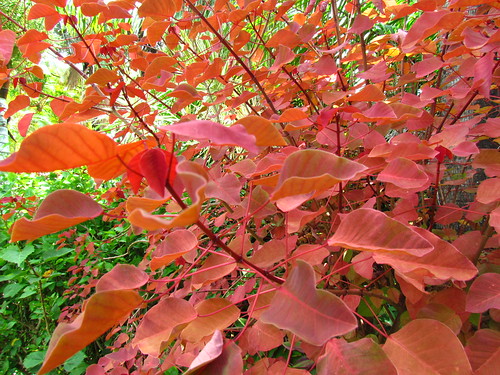
This red hedge captivated me too. I don't think you can have this with any plants in the temperate zone. None that I can think of anyway.
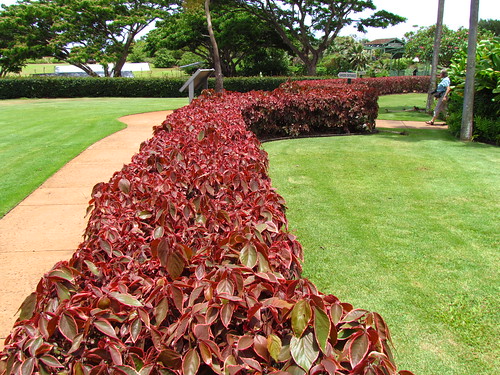
Filoli has a purple Fagus sylvatica 'Atropurpurea' hedge between the knot garden and the cutting garden, but Fagus is a giant tree and that hedge is held to 8-10 feet. This was only three feet tall. Unattainable.


Variegated pineapple?
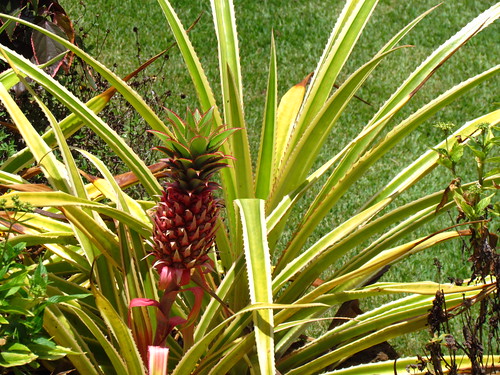



This concludes our visit to the free portion of the garden around the visitor center, which is exactly as I remember it from 2007. The vegetable garden still growing rainbow chard in exactly the same place and I suspect they are even the same chard plants. Do you maintain perennial chard? The root or rhizome becomes wooden and extrudes from the ground or something. Weird.
From here, a tour bus takes you down into the river valley and then you walk.

This is your last chance to pee for 2-3 hours.

Here is a remarkable hot bromeliad bed to enjoy after you wash your hands.
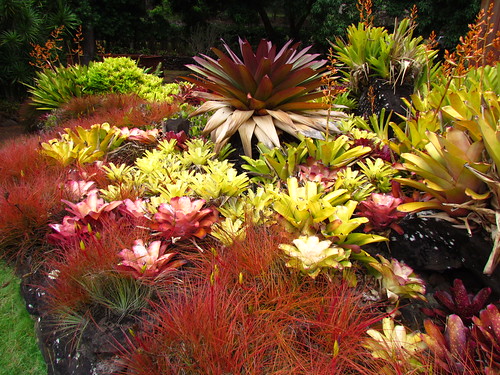
And we begin.
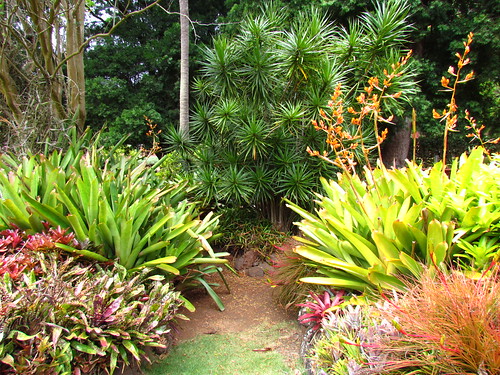
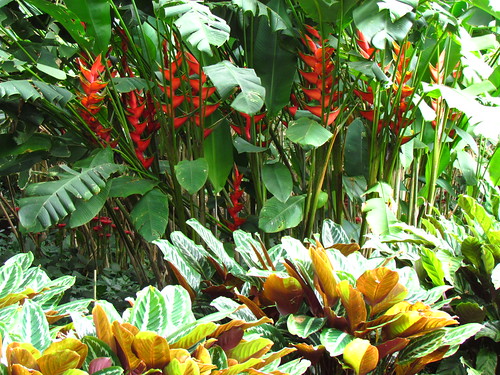
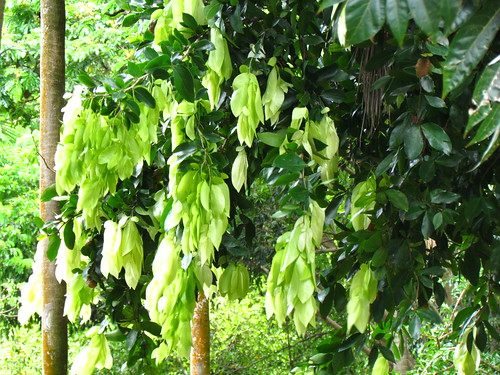
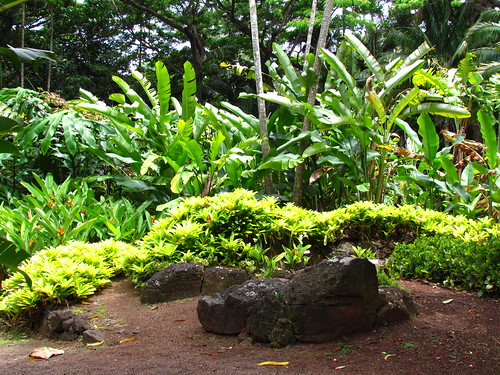
Foliage from the breadfruit tree, Artocarpus altilis, a tropical mulberry. The National Tropical Botanical Garden supports the Breadfruit Institute, dedicated to promoting "the conservation and use of breadfruit for food and reforestation".

A glimpse of Diana heralds your arrival at the tour's first garden room, built around a reflecting pond (none of my pictures of which merit inclusion).
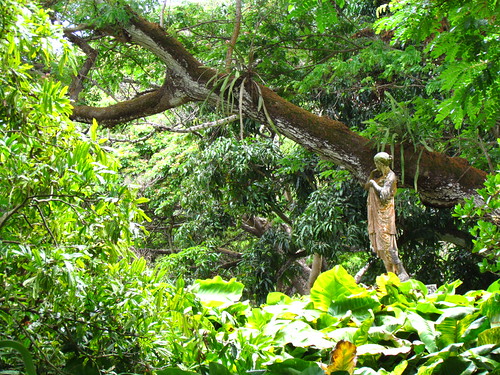
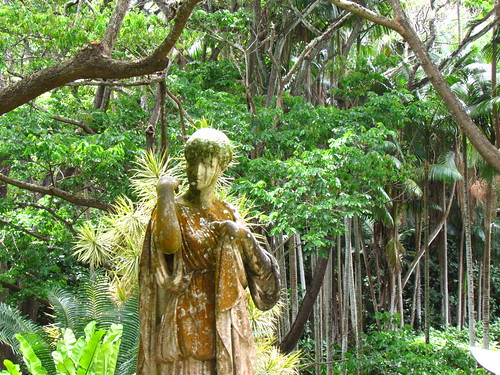
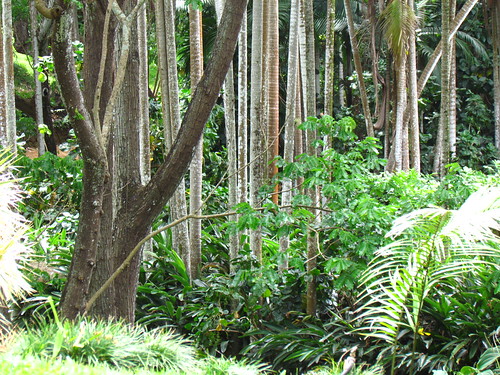
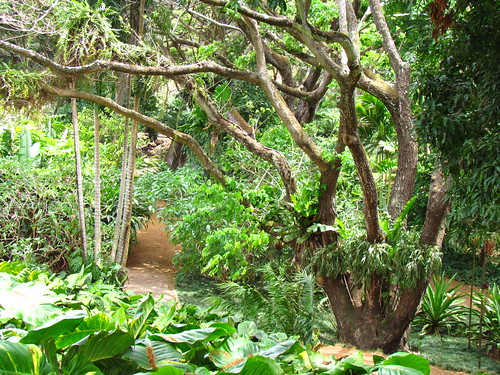
Sansevieria, your ugliest houseplant, can do amazing things in the tropical garden with the right supervision. I'm not saying this is a good example, I'm just saying.
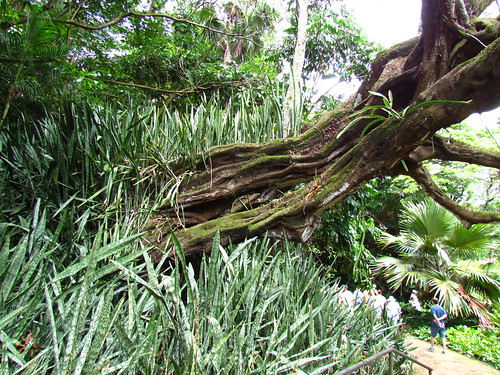
You soon come upon another reflecting pool.

Aaaaahhh...
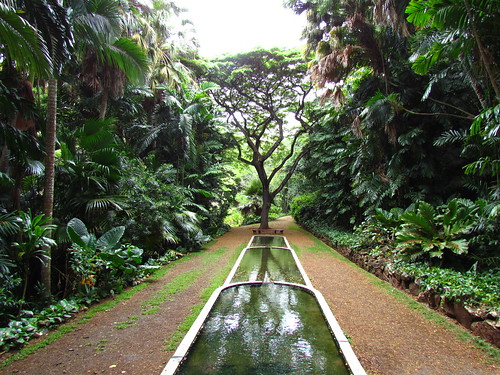
Perpendicular to this reflecting pool, a waterfall.
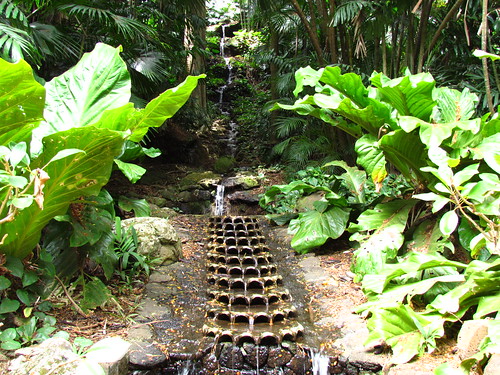
The odd textured segment in the waterfall's path is there to create a particular sonic effect as the water streams over it. Very groovy.
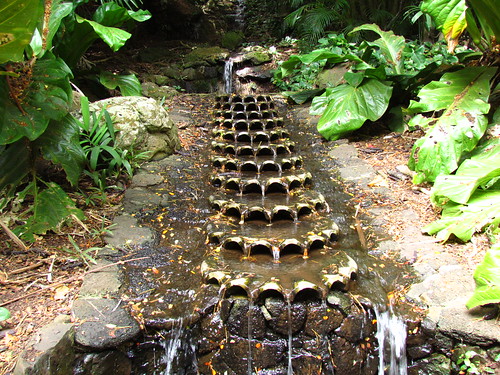
Moving on...
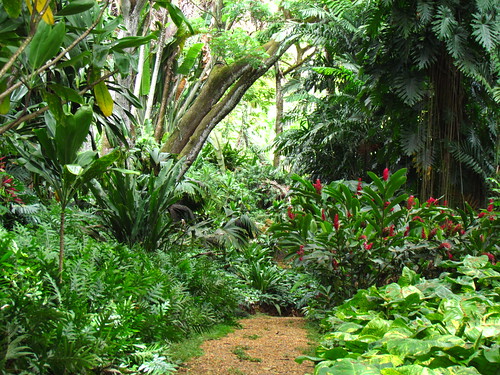
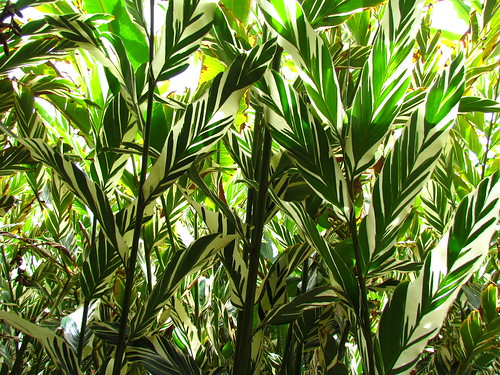
The giant figs are always fun to marvel at. Note human for size comparison.
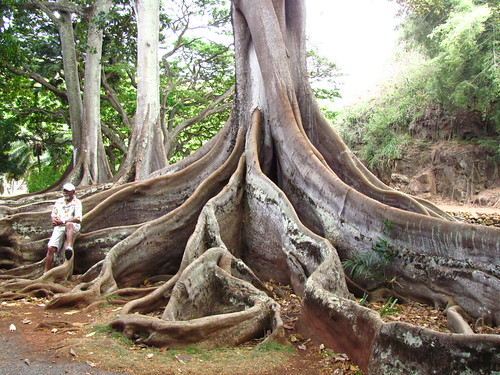
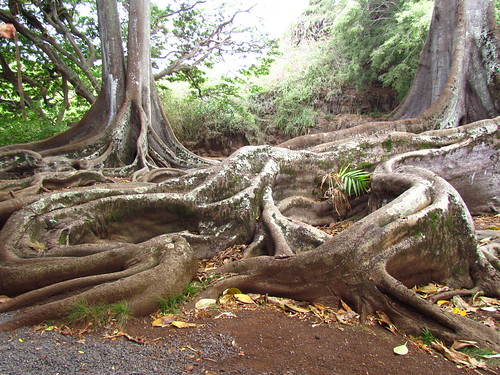
This leads us to the third and final water feature, and perhaps the Allerton's most notable and frequently photographed.
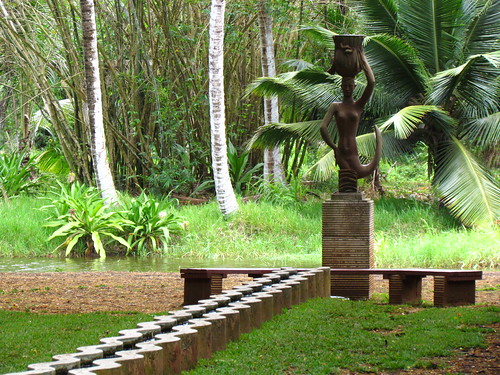
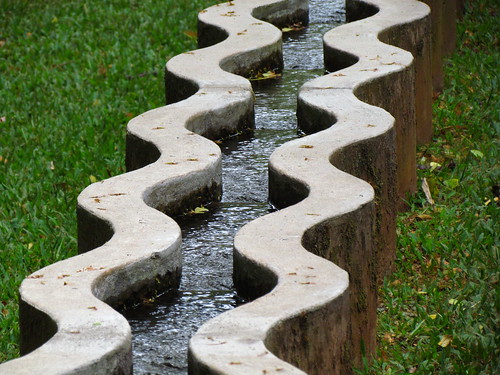
Water flows down an imperceptible gradient along the sinusoidal path interrupted at regular intervals by low, internal dam walls until eventually emptying into the basin with a metronomic rhythm not unlike a relaxed heartbeat.
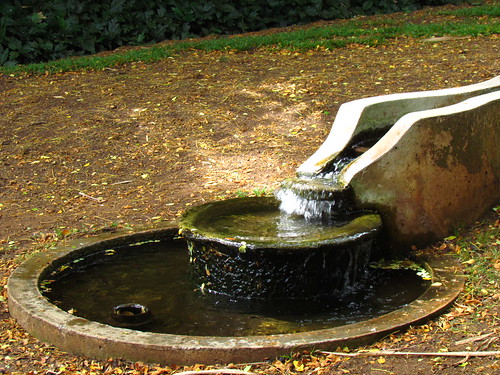

The mermaid figures flank both ends.

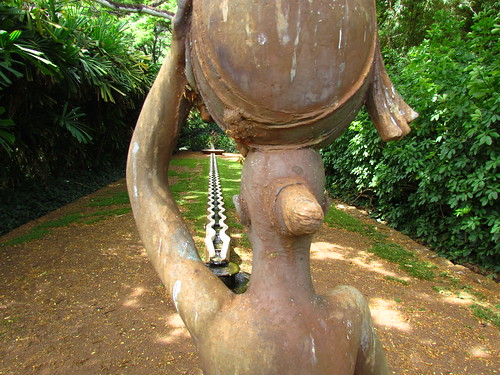


Our visit ends at the lotus pond near the Allerton house.


Nelumbo nucifera. Incomparable flower, fabulous foliage, freaky-deaky fruit.
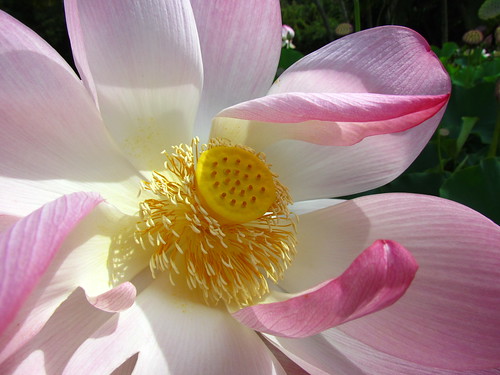
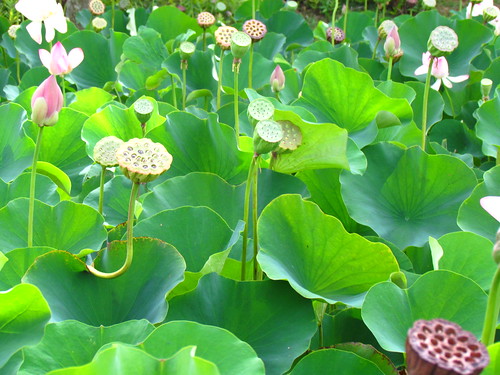

Thank you Allerton Garden. I'm glad we finally saw you.
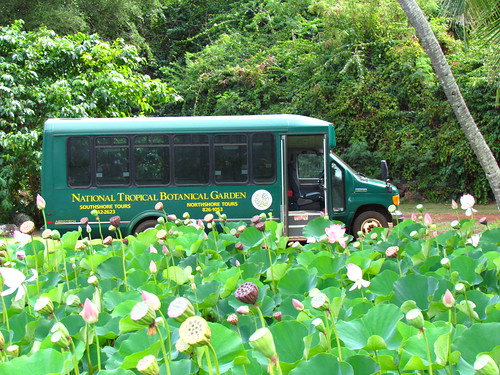

6 comments:
I like the shot of the statue with the spiky plant behind it - it looks as if the statue is putting on a fur cape or something.
If you go back to this garden in the future, maybe you should try making audio recordings of the water features to embed in your post about it. Seems like we're missing an important element of the garden by not being able to hear the sounds.
What was the weather like this time of year? I went to Honolulu and Maui in December and it was wonderful but it might be a whole different story in summer.
The seeds of Lotus are really tasty by the way.
That hot bromeliad bed is... well, hot! I love all those colors. And the fig roots are ridiculous--I would almost swear that those were sculptures instead of real, living three!
I think that your first red guy might be some variety of this: http://www.finegardening.com/plantguide/euphorbia-cotinifolia-tropical-smoke-bush.aspx
I've grown a slightly variegated (white splotched) one before as a houseplant. Correct me if I'm wrong, though--you guys might even be able to have these outside in San Fran, so maybe you're more familiar with them than I am!
That is a spectacular garden. I love those water features.
Only a wee small pang. I must have only seen the McBryde portion of the formal gardens way back in another lifetime. Those pools and statues are different and I seem to recall the Allerton half was not open to the public. John Gregg may still have been alive back in 1989 or so when I went.
Wow! The Allerton Garden is simply 'pure awesomeness'! Aside from the amazing size, range, and color of the tropical plants, I am in love with the water features, and in particular with the last one pictured in your post. Truly spectacular!
Post a Comment